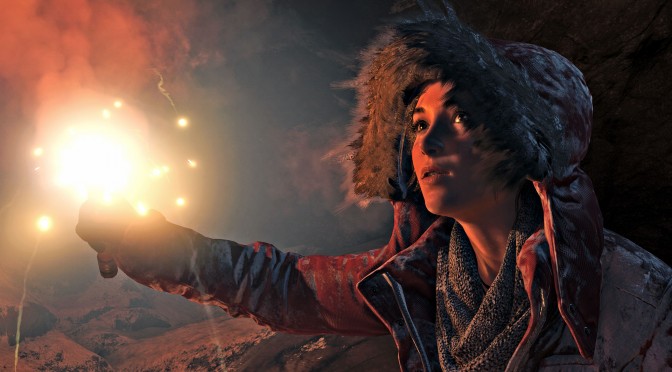Rise of the Tomb Raider releases next month on Xbox One – and in early 2016 on the PC – and the game’s Technical Art Director, Mike Oliver, has revealed some of its graphical key features. According to Mike, Rise of the Tomb Raider will support – among other things – physically based rendering, screen space reflections and volumetric lighting.
Going into more details, Mike confirmed that Rise of The Tomb Raider will support:
- Image Based Lighting
- Physically Based Materials
- Post FX
- Colour Grading
- Adaptive Tone Mapping
- Screen Space Ambient Occlusion
- Motion Blur
- Depth of Field
- Screen space reflections
- Screen Glare
- Volumetric Lighting
Most of you are aware of what Colour Grading, Post FX, Motion Blur, Depth of Field, Screen Glare, SSAO and Screen Space Reflections stand for, so we’ll be focusing on the remaining effects (we strongly suggest reading Crystal Dynamics’ blogpost about all the aforementioned features).
Image Based Lighting is a technique that provides artists the flexibility to create their scenes with significantly less lights, while offering greatly increased flexibility and quality. In order to take advantage of this lighting technique, Crystal Dynamics uses physically based materials, that allow for more accurate and natural looking surfaces that retain their quality in a variety of lighting conditions.
Adaptive Tone Mapping is another feature in modern video games that was introduced because of Physically Based Rendering, and it automatically converts the extreme range of light into a range that monitors can display.
Last but not least, Volumetric Lighting is a 3D effect that simulates beams of light in an environment, such as light passing through a window. In other words, this technique is used in Rise of the Tomb Raider for the light/sun shafts.
John is the founder and Editor in Chief at DSOGaming. He is a PC gaming fan and highly supports the modding and indie communities. Before creating DSOGaming, John worked on numerous gaming websites. While he is a die-hard PC gamer, his gaming roots can be found on consoles. John loved – and still does – the 16-bit consoles, and considers SNES to be one of the best consoles. Still, the PC platform won him over consoles. That was mainly due to 3DFX and its iconic dedicated 3D accelerator graphics card, Voodoo 2. John has also written a higher degree thesis on the “The Evolution of PC graphics cards.”
Contact: Email

